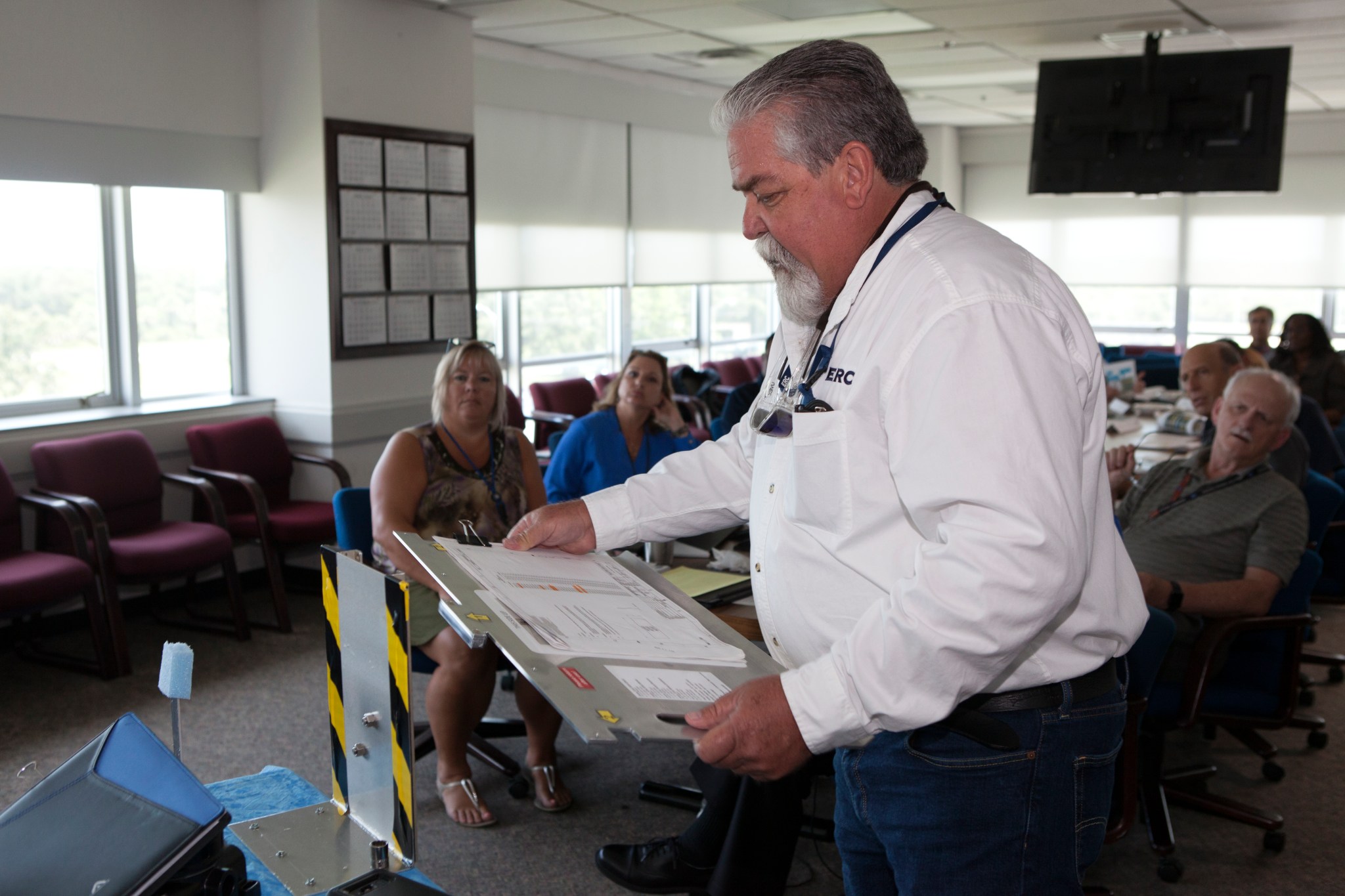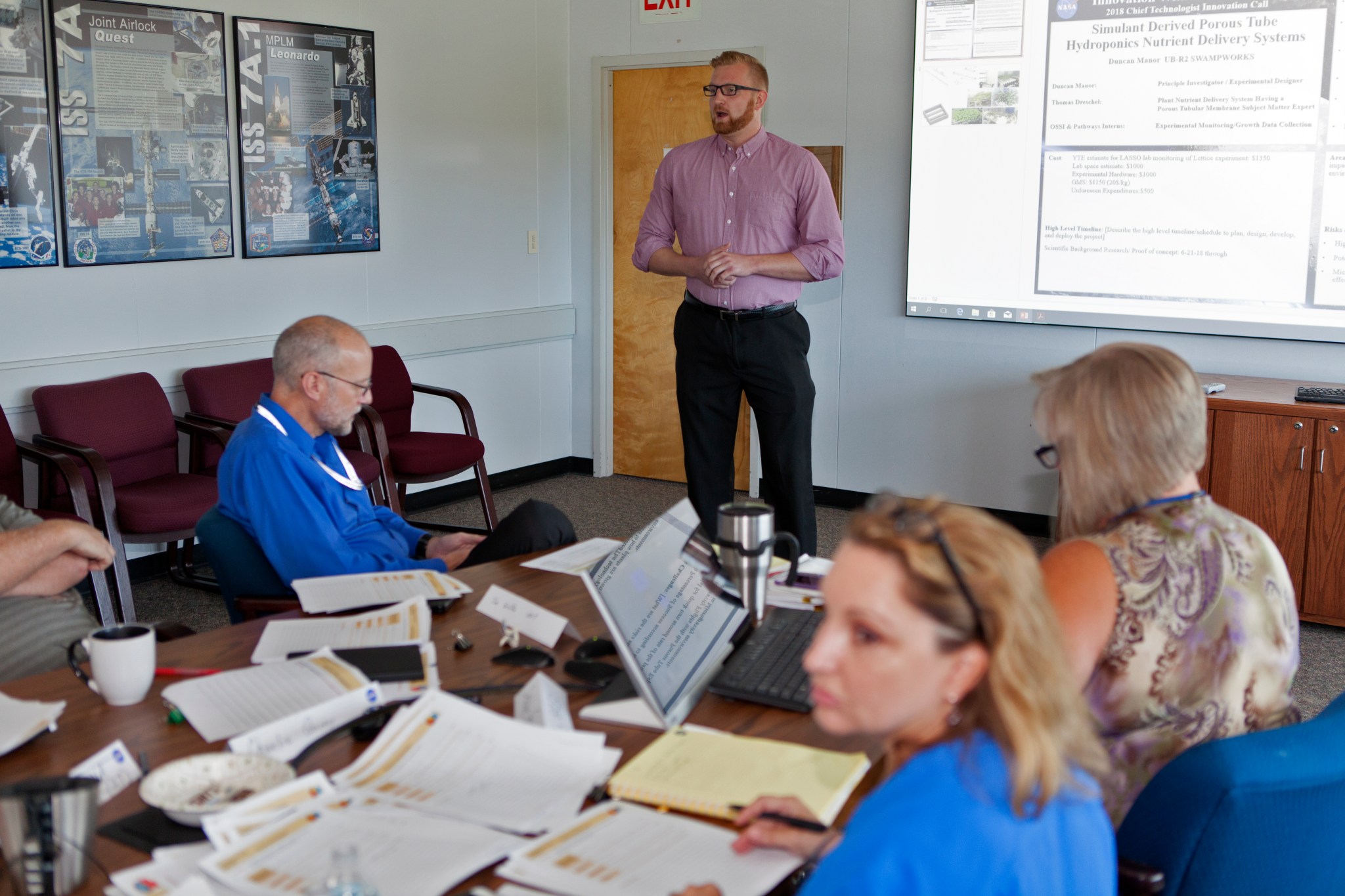

By Jim Cawley
NASA’s Kennedy Space Center
Innovation is alive and well at NASA’s Kennedy Space Center in Florida.
Kennedy civil servants and contractors presented their ideas during the 2018 Chief Technologist Innovation Call “Innovation without Boundaries” event held at the Space Station Processing Facility on Aug. 2. The judging panel, which included about 20 members of senior staff, contractors and representatives from several center organizations, faced a wide range of topics among the 39 proposals.
“I was very pleasantly surprised at the quality and the variety,” said Deputy Chief Technologist and event organizer Kathy Loftin. “We had ideas ranging from planting a mile of wildflowers on the causeway to putting solar panels on the VAB.”
Proposals were split into two categories: innovation ideas with little or no associated costs and innovation ideas that require procurement. Submitters had two minutes to present their proposals, followed by a three-minute question-and-answer session. It was a lot to accomplish in a short period of time, but as Loftin pointed out, that was part of the challenge. Presenters ranged in experience from novices to polished experts.
“So we have two purposes here: one is to reward innovative ideas, but second — and I think more importantly — is just to encourage innovation; give people an opportunity to get up there, present a proposal and get acclimated to the process,” Loftin said.
Judges remained engaged, inquisitive and constructive during the presentations. They worked diligently during the brief intervals between presenters, striving to rank their top proposals. “Innovation without Boundaries” involved an entire day of commitment from the panel.
“What I appreciated most was the diversity of the presenters from students to managers, as well as the range of proposed projects,” said Communication and Public Engagement Deputy Director and event judge Hortense Diggs. “A few dealt with safety, employee morale, aids for interns and a few were technical. The variety of projects and the fact that they only had two minutes to present kept my interest high.”
The Chief Technologist Innovation Call is agencywide. All 10 NASA centers receive the same agency funding through the Office of the Chief Technologist Innovation Fund. The twist is in the execution and application — each center organizer is allowed to put his or her own spin on it, effectively making them the initial innovators in the project.
Since this was Loftin’s first time organizing such an event, she did some benchmarking at Kennedy, modeling “Innovation without Boundaries” after Exploration Ground Systems’ “Sharkish Tank” competition earlier this year. She broadened the idea to include technical and non-technical proposals throughout Kennedy.
In the innovation ideas with little or no associated costs category, there were awards for first, second and third place for both individuals and teams. The first place-individual award went to Guy Naylor for a field laptop workspace project. There was a tie for second place: Dionne Jackson for an electronic access training checklist and Genevieve Ayala for an Exploration Ground Systems communication support request site. Naylor also took first in the team category for a 3/8 drive cross adapter tool proposal, while Hunter Goodenow placed second for the electronic access training checklist.
The innovation ideas that require procurement category is a bit more complicated, and those winning proposals are still in the process of being funded. The Office of the Center Chief Technologist is working with other KSC programs to leverage additional funding where possible and increase the number of awardees. One winner in this category will be selected by Kennedy’s chief technologist to present their idea to NASA Chief Technologist Douglas Terrier at Headquarters and compete against winners from other centers for an additional $50,000. The prize will be used to develop the winning proposal concept.
At Kennedy, everyone who submitted a proposal was invited to an innovator recognition luncheon held on Aug. 23. Loftin surprised winners with oversized checks, adding a sweepstakes feel to the awards. She expects to make this an annual event.
“It was a raging success, though I do have a page of lessons learned since this was the first event,” Loftin joked. “The overall objective was to inspire innovation in all areas. I really love the fact that we were able to have a competition that included all Kennedy employees.”


























